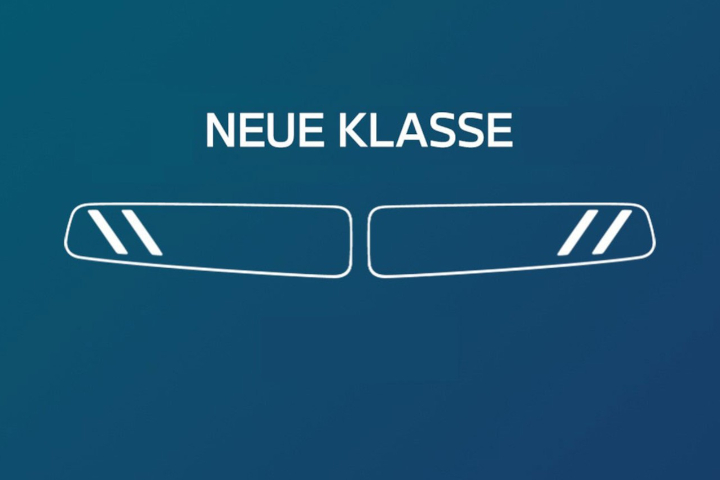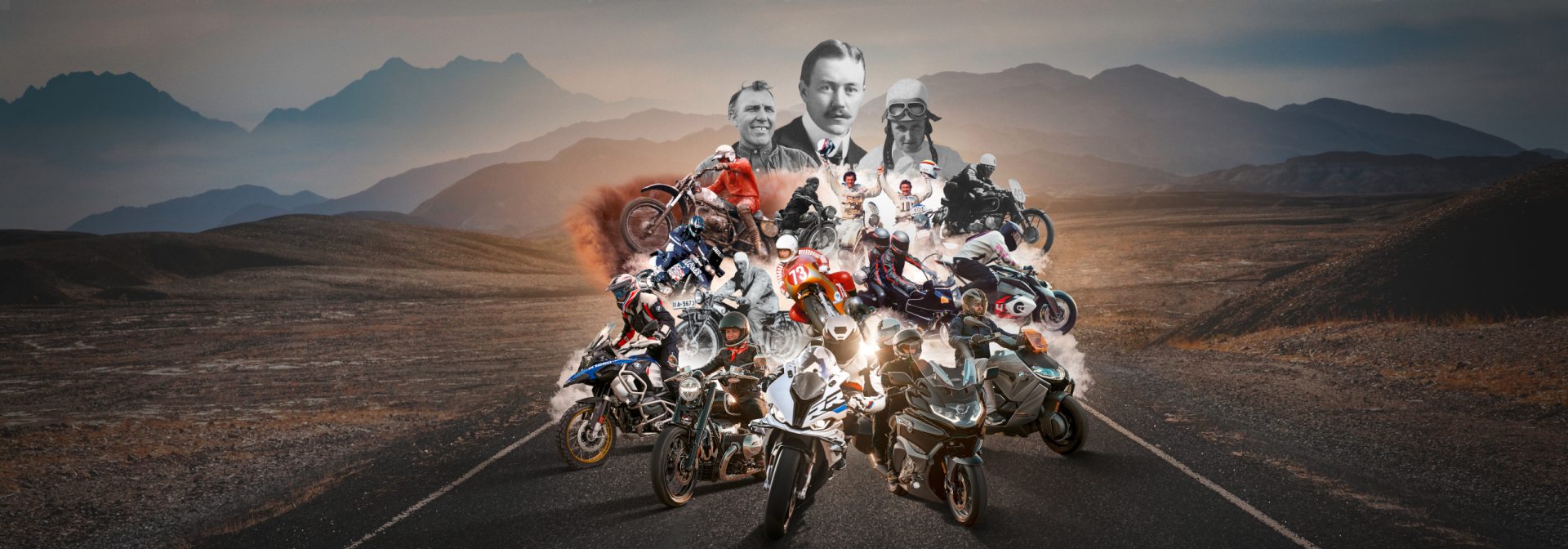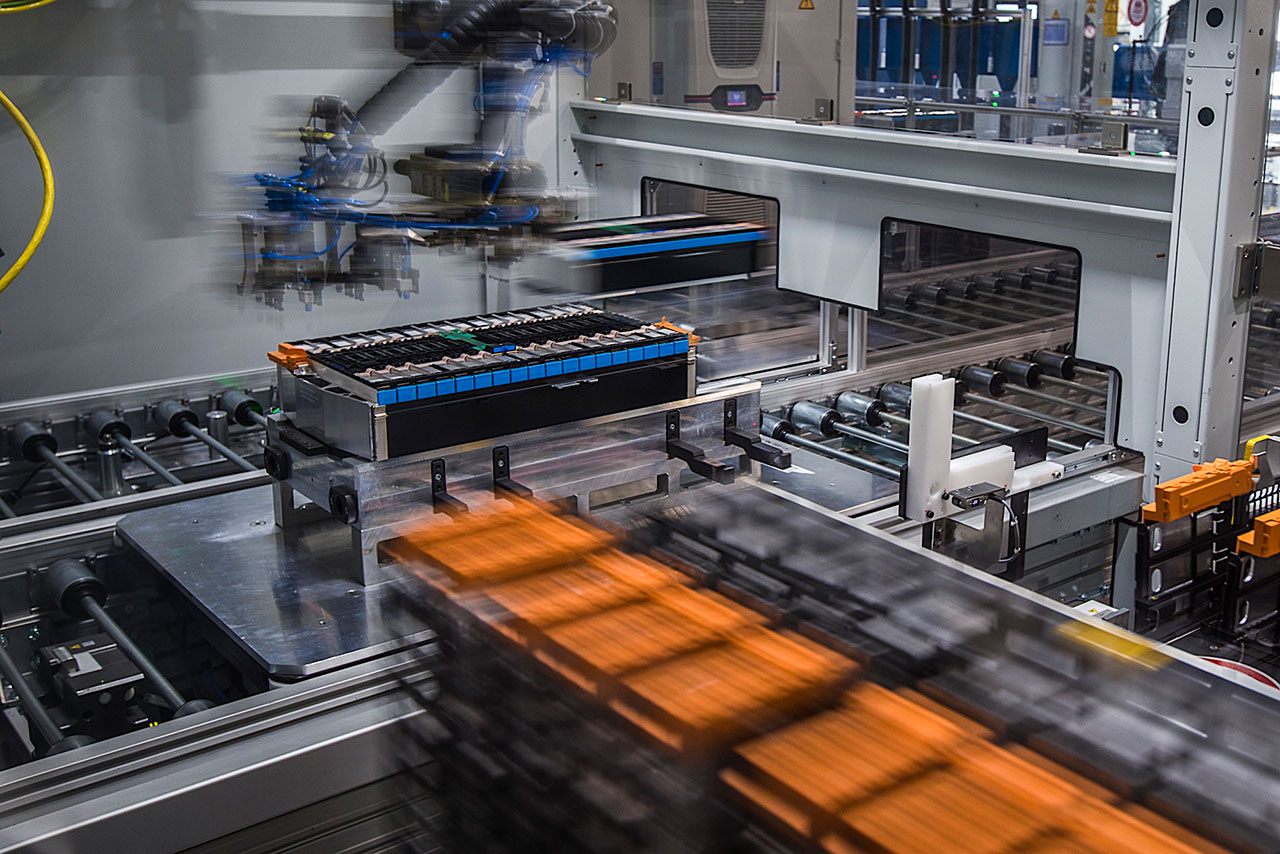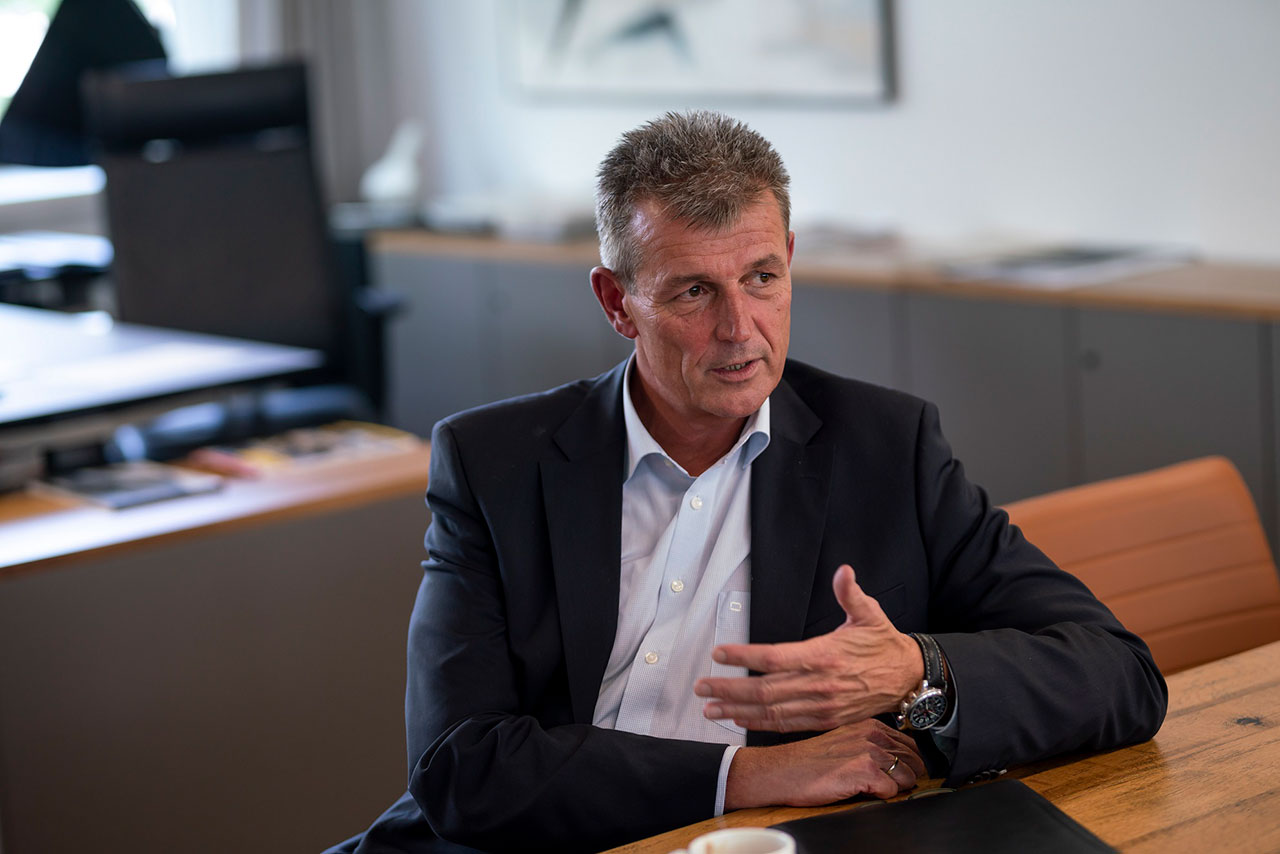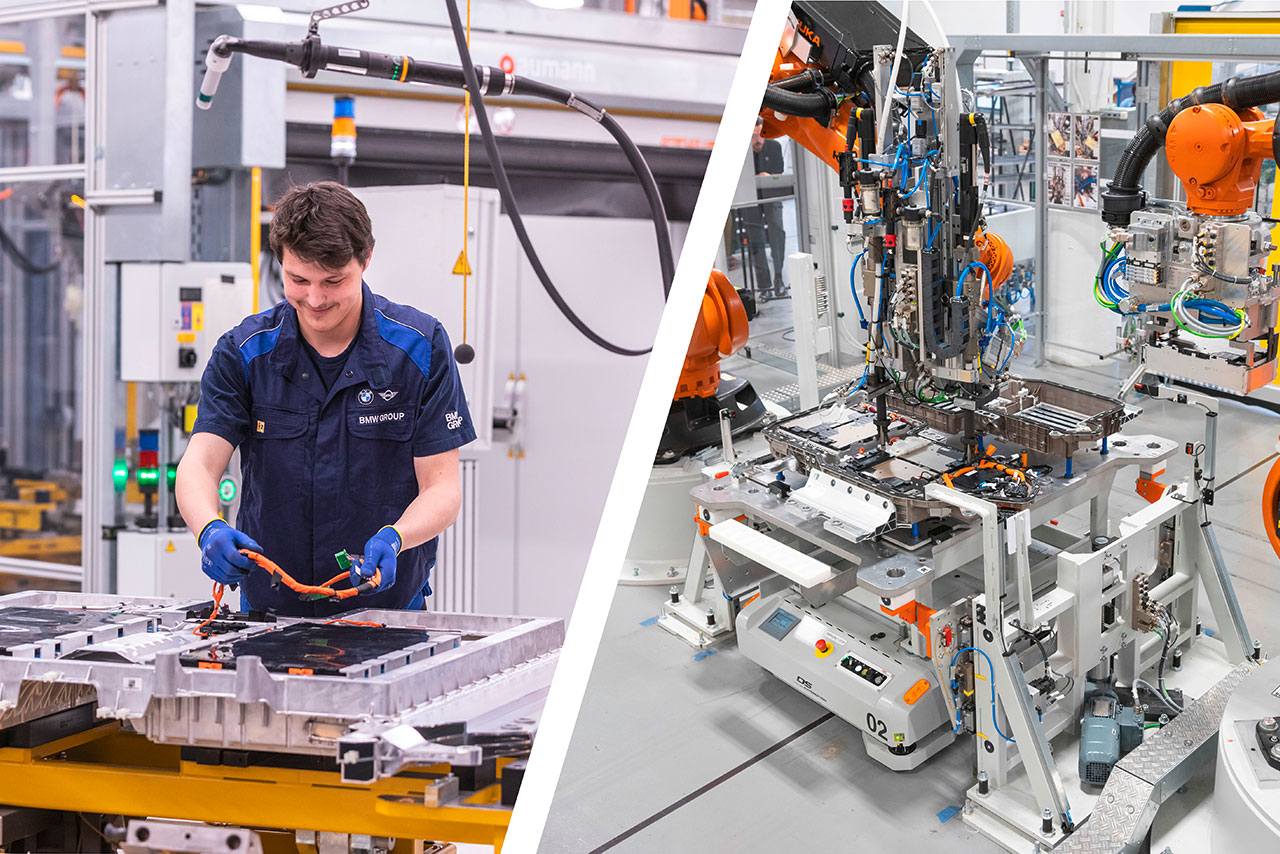BMW Motorrad is celebrating its 100th anniversary. So, what better reason is there to take a nostalgic look back at the early days of an unprecedented success story – while at the same time opening up visions of a future where the role of motorbikes is increasingly being redefined in a digital world. Then as now, it’s a story driven by passion, engineering and pioneering spirit.
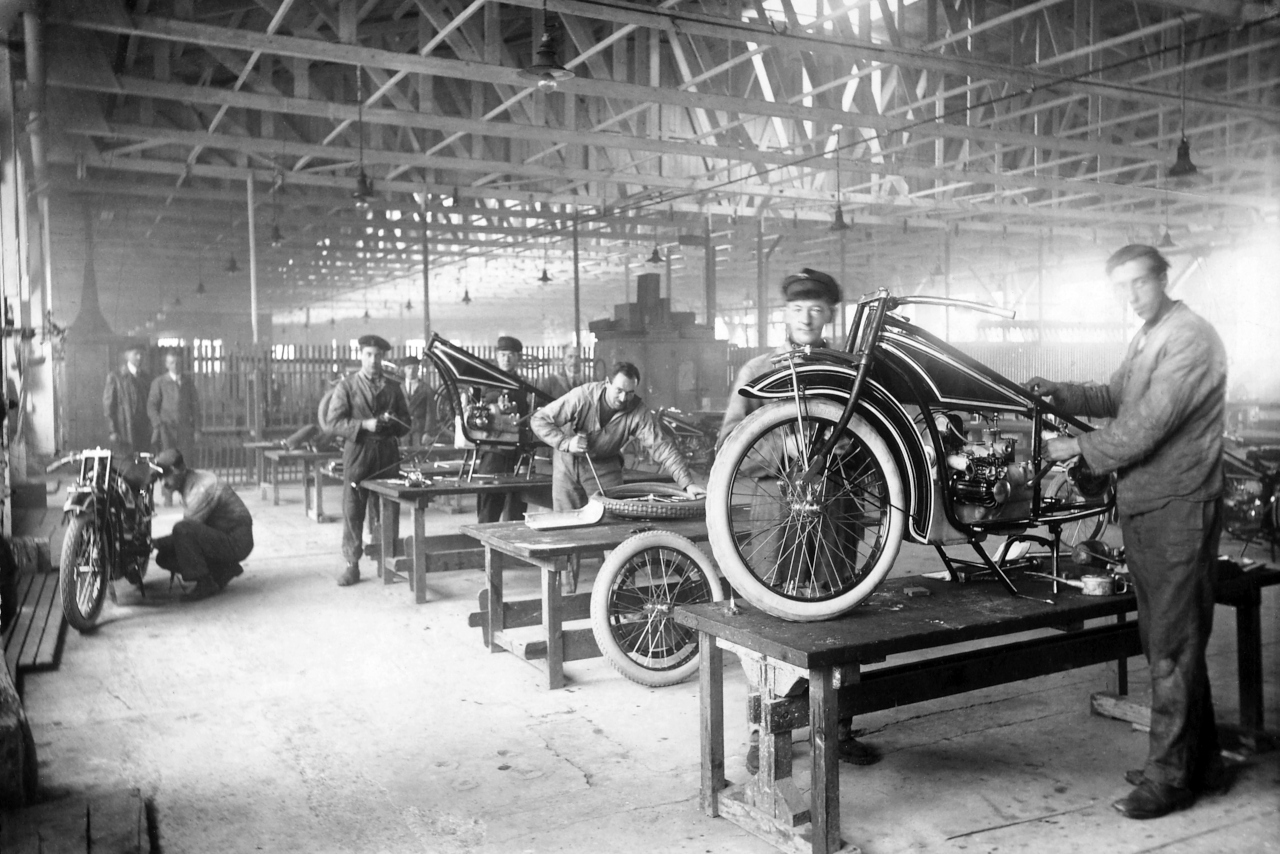 BMW Motorrad R 32
BMW Motorrad R 32
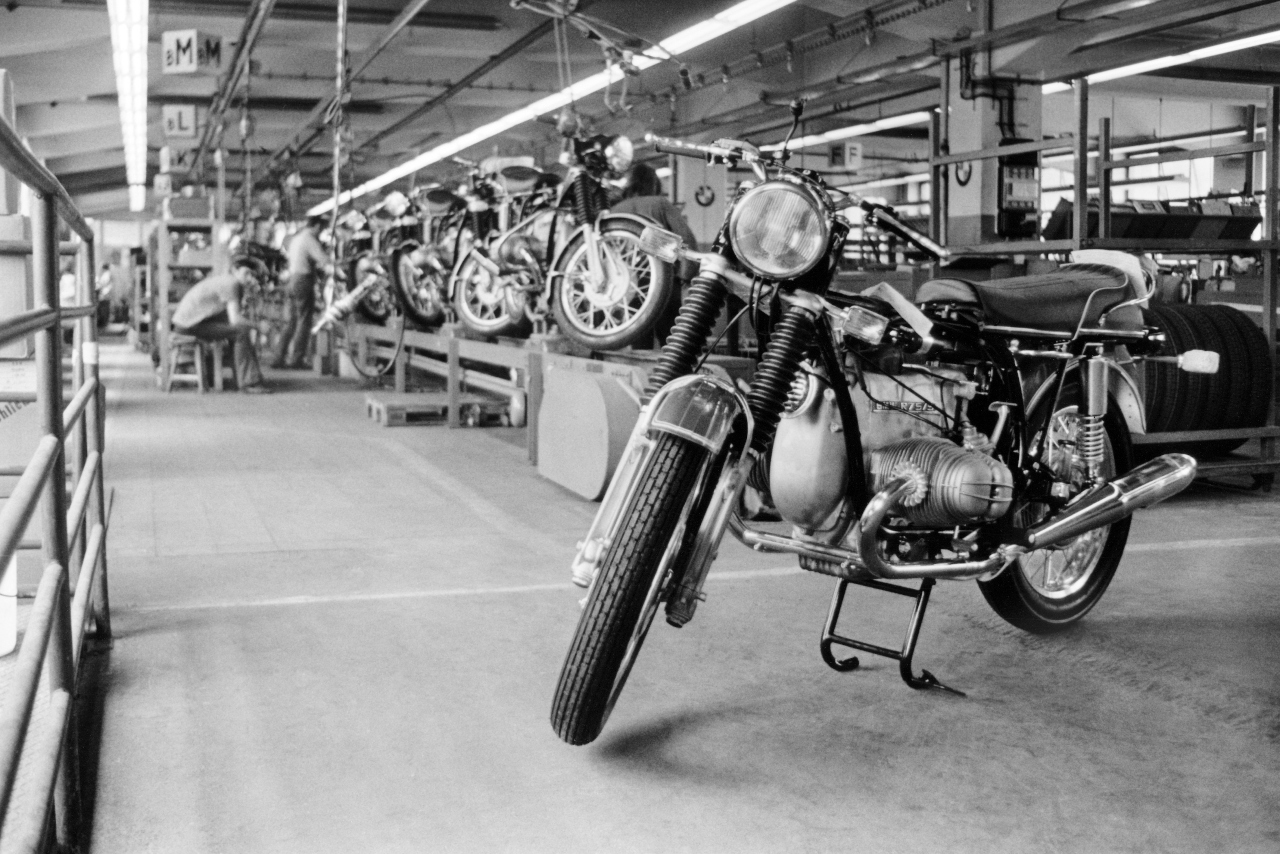 BMW Motorrad R 75/5
BMW Motorrad R 75/5
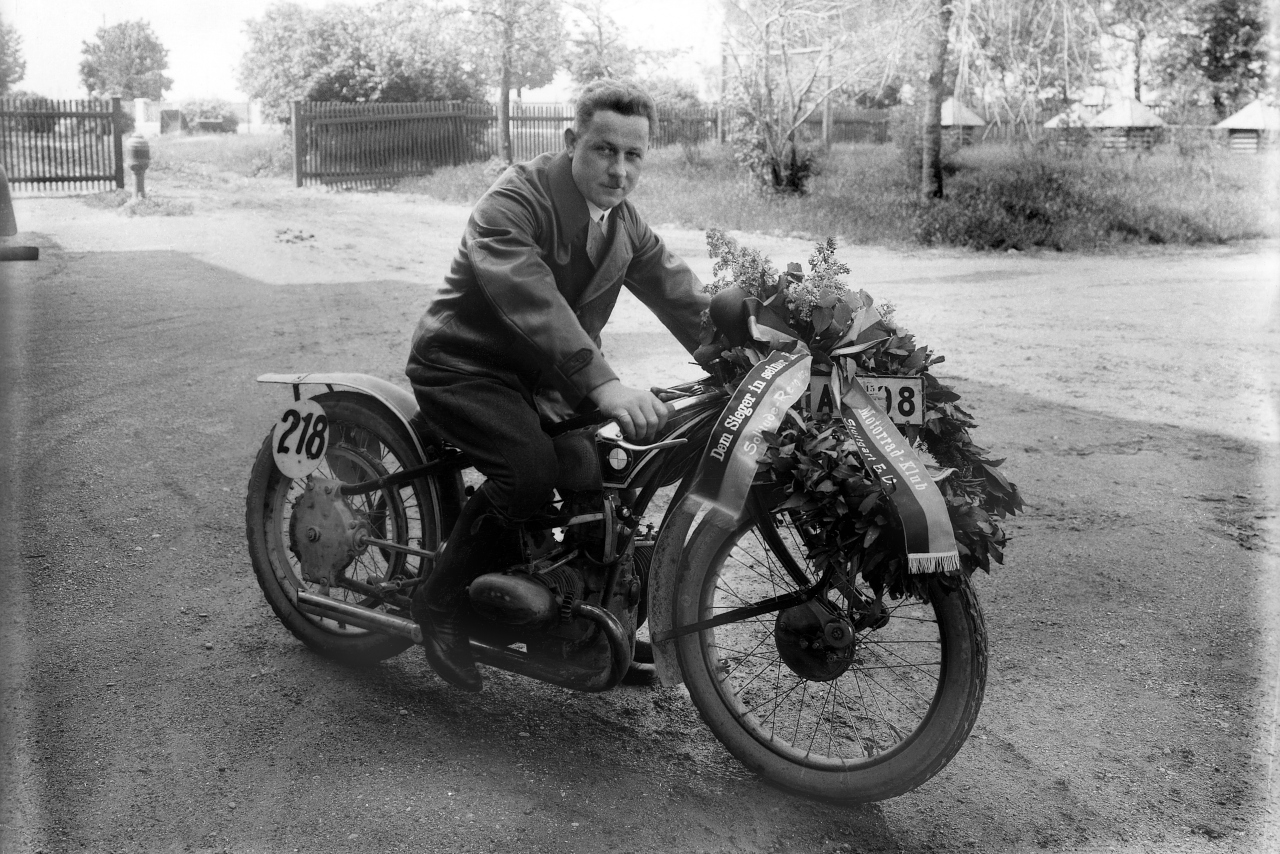 BMW Motorrad R 32
BMW Motorrad R 32
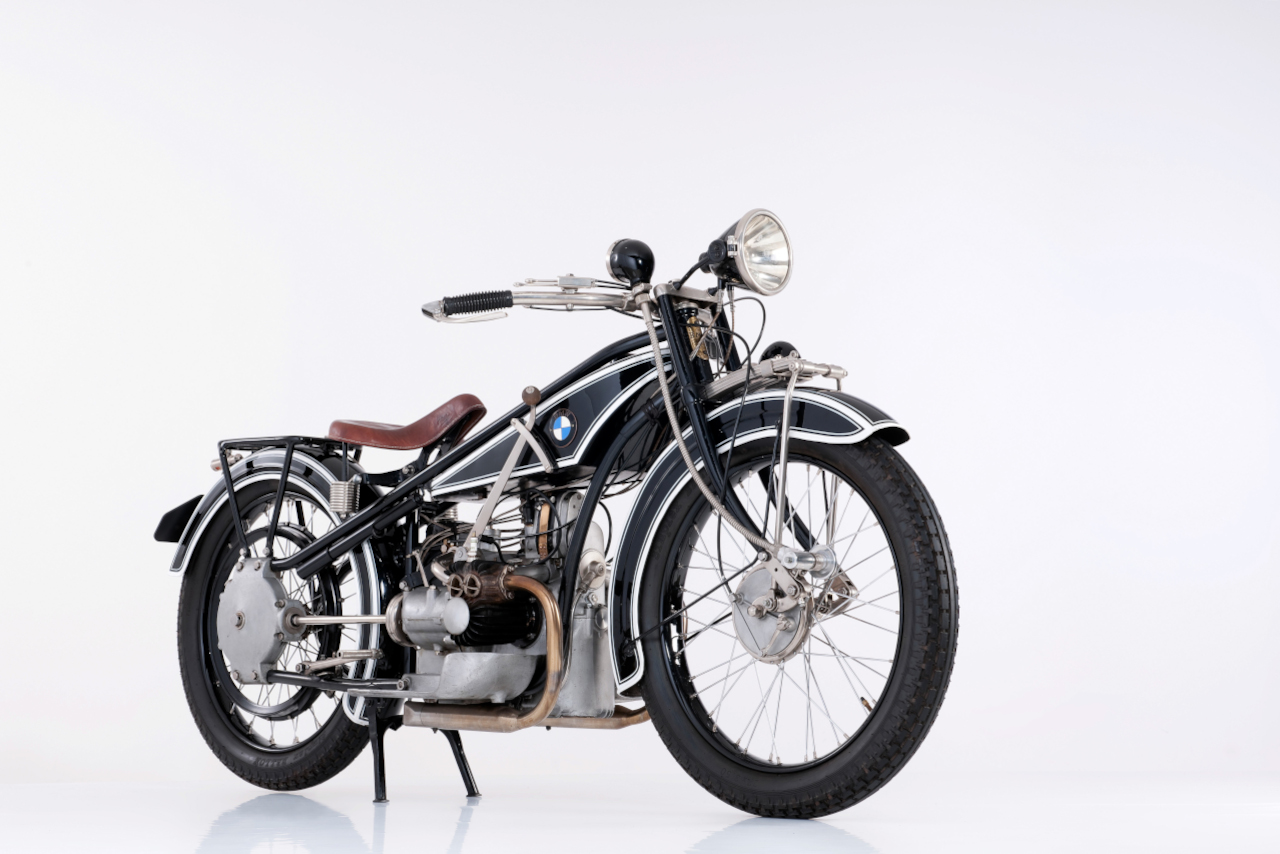 BMW Motorrad R 32
BMW Motorrad R 32
1916 – 1920: BMW – Aero engines and more.
BMW was founded on 7 March 1916. That was the day the aero-engine manufacturer Gustav Otto became Bayerische Flugzeug Werke AG (BFW). One year later, in 1917, the Karl Rapp Motorenwerke was renamed Bayerische Motoren Werke GmbH (BMW) – which went public in 1918. BMW produced aero engines, supplied engines to other companies, and also manufactured train brakes at the time, and several years were to pass before it finally started manufacturing motorcycles of its own.
1920: Martin Stolle designs the first BMW Motorrad boxer engine.
The first M2 B 15 motorcycle engine was designed by Martin Stolle, a foreman with BMW. Stolle opted for the boxer configuration, which had already proven a success in his own Douglas: a type of two-cylinder engine with counter-rotating pistons for an outstanding balance of masses and smooth running. The 298 cc two-cylinder boxer generated 4.8 kW (6.5 hp) and was supplied to motorcycle producers such as Victoria and Helios to fit to their bikes. The new engine immediately made an impression in the first Victoria motorcycle – the KR 1 –and performed well in the competitive arena: at the International Reich Rally of autumn 1921, the KR 1 achieved best time of the day twice.
1923: The BMW R 32 – The first BMW motorcycle, made under the auspices of Max Friz.
By this time, BMW had taken over Helios production – with the intention of producing a motorcycle of its own. Under the auspices of Max Friz, technical director and chief designer with BMW at the time, the BMW R 32 was born. It differed from the Victoria and the Helios in one crucial way: the engine was no longer mounted transversely but longitudinally to the crankshaft, which ran parallel to the direction of travel. This meant that the cylinders protruded to the left and right in the airstream – in typical BMW style.
The R 32 incorporated what would become a trademark feature of BMW motorcycles: a boxer engine with a flange-mounted gearbox and solid shaft drive rather than a sensitive chain or belt. The 198 cc unit generated 6.35 kW (8.5 hp), giving the bike a top speed of 100 km/h. The R32’s impact on the industry was pivotal: the dusty gravel roads at the time were difficult to negotiate, so the low-wear, low-maintenance shaft drive in particular was able to make a name for itself. In addition, motorcyclists were quick to appreciate the bike’s safe yet sporty handling.
1924 – 1939: Non-stop sporting success.
The best advertisement for a new motorcycle – and a new brand, especially – is sporting success. This was achieved in February 1924, when Rudolf Schleicher rode the BMW R 32 to victory in the hill climb on the Mittenwalder Gsteig country road in the Alps just south of Munich. Schleicher then went on to engineer the R 37, which was based on the R 32, with an identical chassis technology and design, but sported a different engine. The new 16 hp powerplant delivered almost double the output. In 1924 three R 37 prototypes competed at the Solitude racetrack in southwest Germany, immediately clinching three class victories for BMW Motorrad. This was followed by Franz Bieber being crowned German Champion.
Also highly effective when it comes to advertising are world speed records. In 1937 works rider Ernst Henne set the last of his many world records, clocking up almost 280 km/h on a fully faired supercharged BMW. His record was to remain unchallenged for the next 14 years. In 1939 Georg (“Schorsch”) Meier rode his supercharged BMW race bike to victory in the oldest motorcycle road race in the world, the legendary Tourist Trophy on the Isle of Man. With that, BMW bikes became the talk of the town.
1969: The new BMW /5 series, made at the BMW plant in Berlin-Spandau.
In the mid-1950s things got tougher for motorcycle manufacturers, as people began to opt for the much more comfortable and practical solution of the car. But by the end of the Sixties, positive impulses from the American motorcycle market hinted at light at the end of the tunnel. In autumn 1969, perfectly timed, BMW unveiled its all-new /5 series – the first to be produced at the new BMW motorcycle plant in Berlin-Spandau.
In keeping with tradition, the /5 motorcycles were powered by the successful boxer engine – although the design of the new unit had little in common with previous boxers. The crankshaft was now forged in a single piece and ran on plain bearings, and the camshaft was located below it. For the engine casing, the engineers continued to use a tunnel design, albeit a much stiffer one that offered sufficient scope for additional engine capacity. The chassis, meanwhile, was completely new. The series ranged from the 24 kW (32 hp) R 50/5 and the 29 kW (40 hp) R 60/5 through to the top-of-the range R 75/5 with a whopping 37 kW (50 hp) and a top speed of 175 km/h.
1973: BMW R 90 S – The first BMW superbike.
In 1973 the team in Berlin celebrated 50 years of BMW motorcycles and production of their 500,000th BMW bike. That year the BMW R 90 S re-entered competitive sports for the first time since the R 69 S. With its 898 cc engine and generously dimensioned 38 mm Dell’orto slide carburettors, the R 90 S delivered a staggering 49 kW (67 hp) and a top speed of 200 km/h. With its dynamic handlebar fairing and sporty, elegant paintwork – initially available in Smoke Silver and one year later in the legendary Daytona Orange as well – the R 90 S was designed to appeal to sporty riders especially.
Before long, the image of the R 90 S also started to benefit from racing success, with Hans-Otto Butenuth and Helmut Dähne claiming class victory in the 1976 Production TT. That same year Steve McLaughlin won the prestigious Daytona 200 Miles, and his team-mate Reg Pridmore was crowned American Superbike Champion. Just a few of the reasons for the enduring popularity of the R 90 S, then and now.
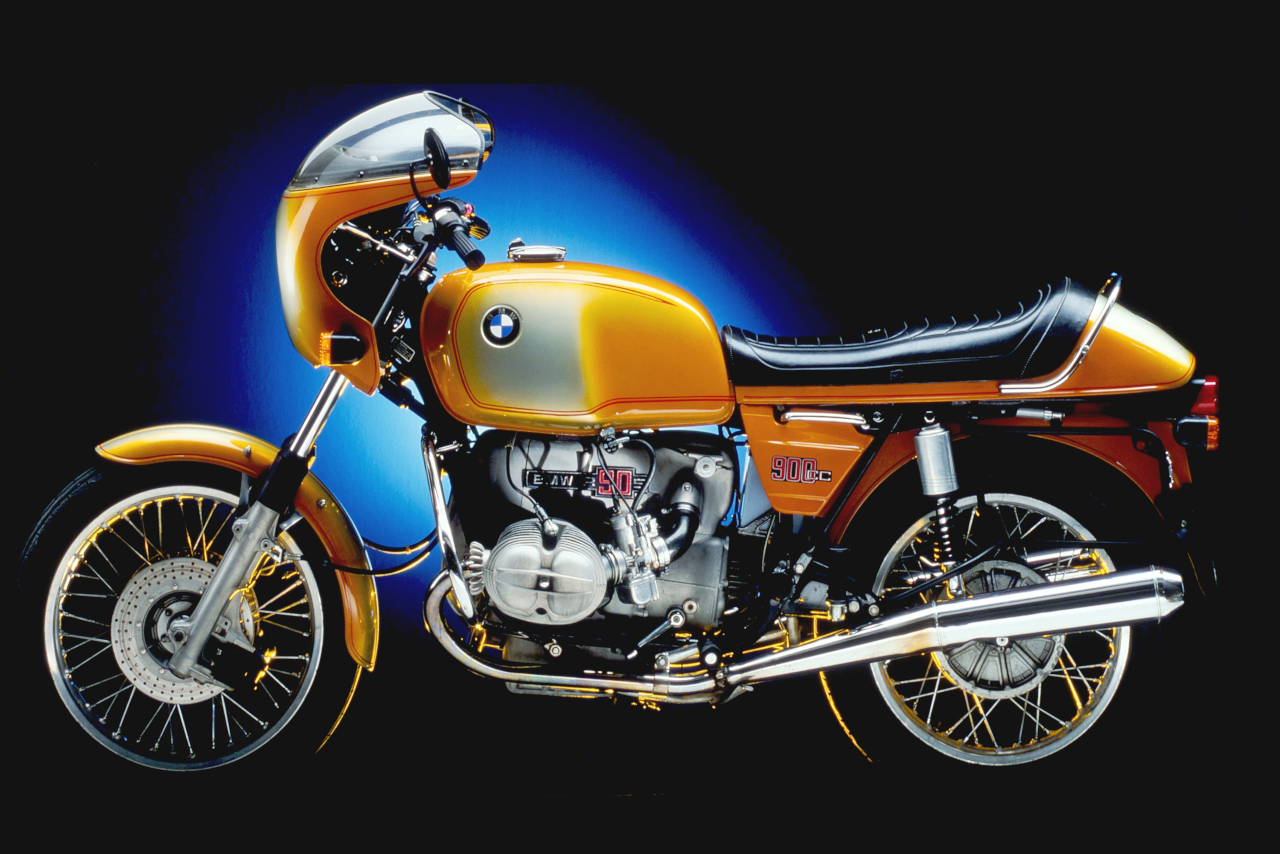 BMW Motorrad R 90 S
BMW Motorrad R 90 S
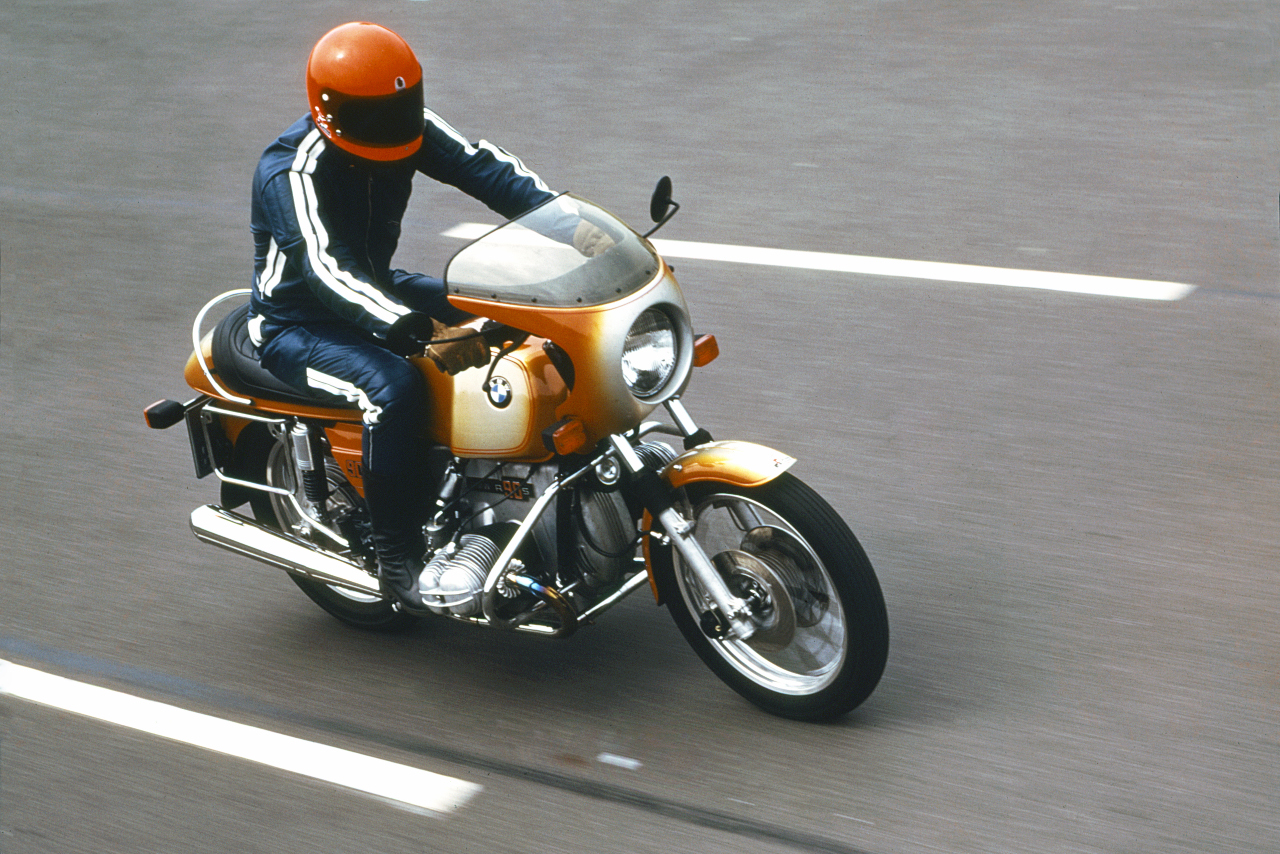 BMW Motorrad R 90 S
BMW Motorrad R 90 S
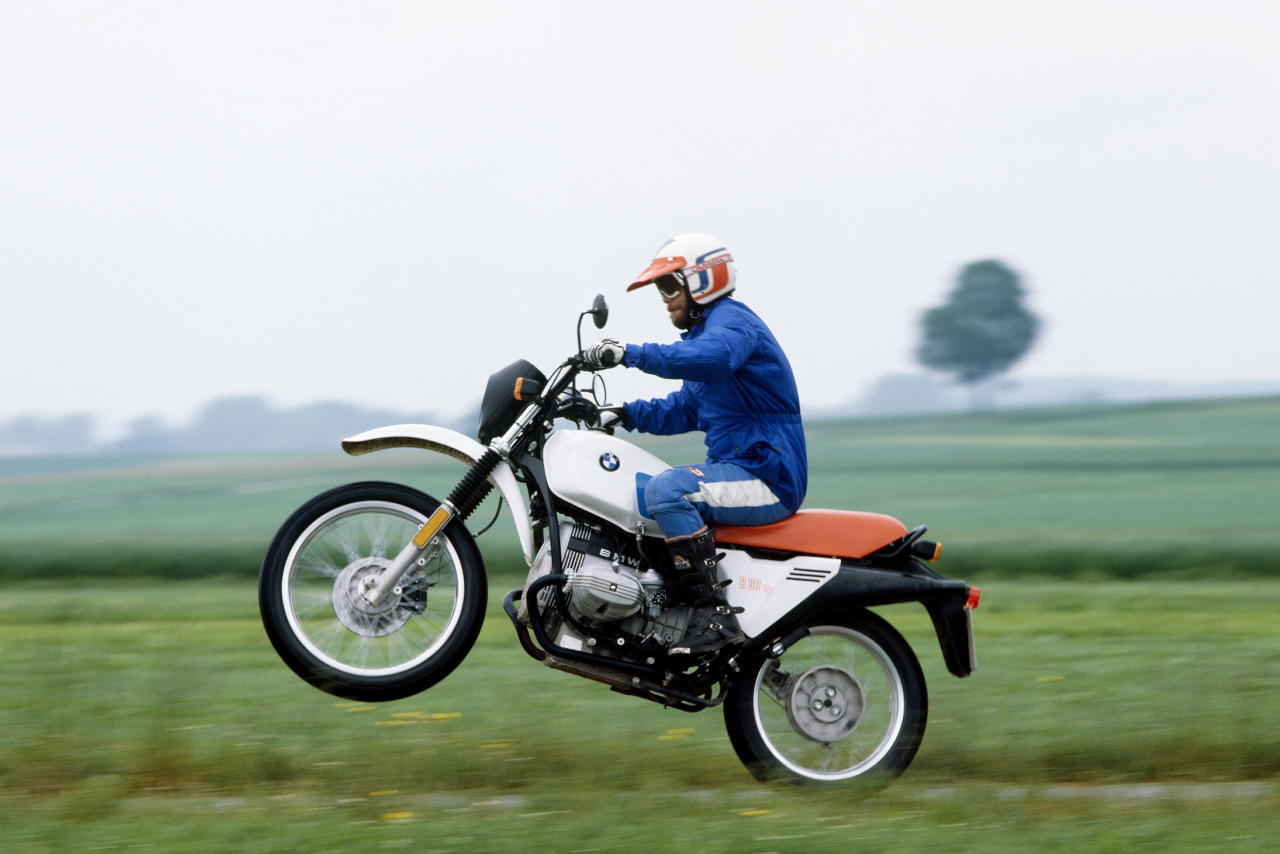 BMW Motorrad R 80 G/S
BMW Motorrad R 80 G/S
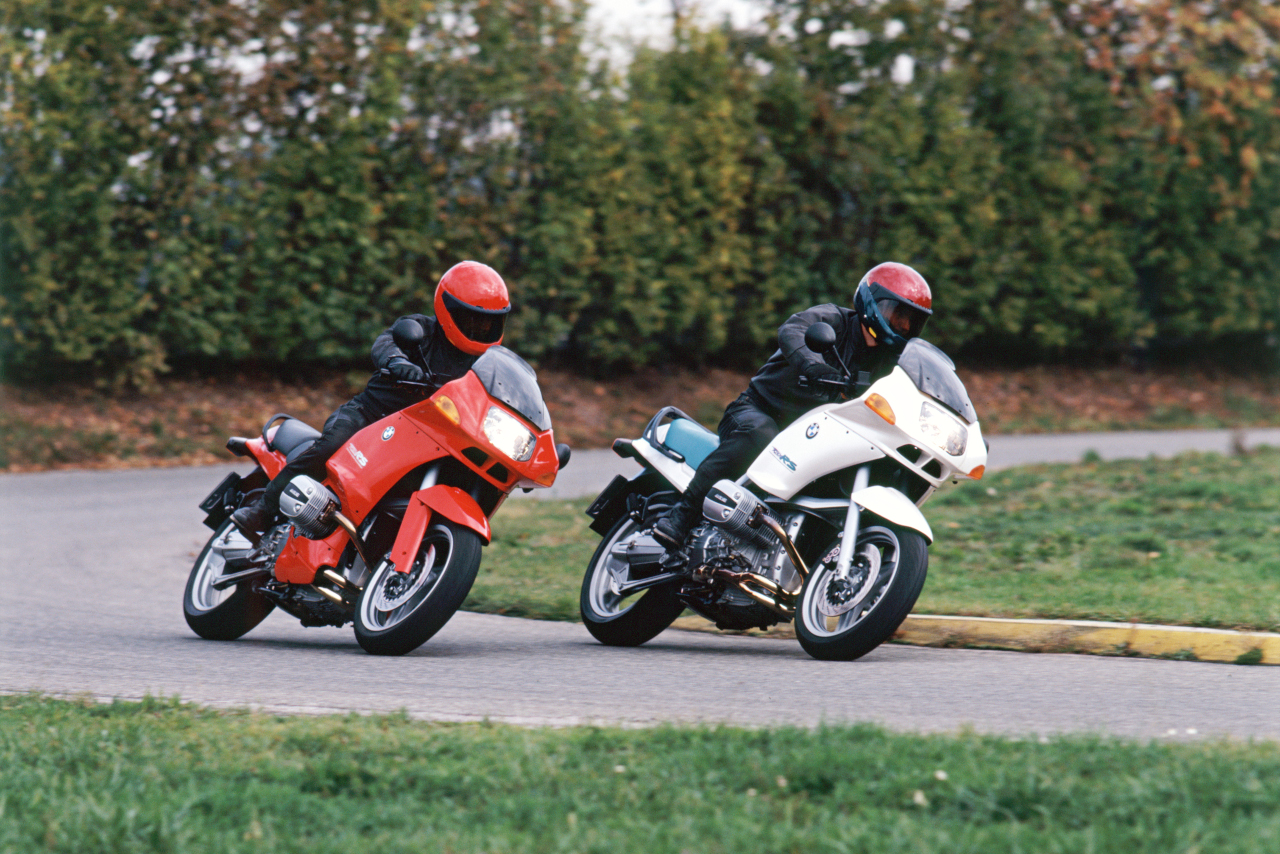 BMW Motorrad R 1100 RS
BMW Motorrad R 1100 RS
1980: R 80 G/S – Entering a new segment.
In 1980 BMW Motorrad launched a complete innovation in the world of boxer engines: the R 80 G/S. The “G/S” in the bike’s name stands for “Gelände/Straße”, which is German for “offroad/road”. Its debut marked the start of a lasting change in the world of motorcycles: the large or travel enduro segment was established and remains an integral part of it to this day. With a 797 cc engine delivering 37 kW (50 hp), and weighing in at just 186 kilograms, the R 80 G/S offered power in abundance and allowed not just light to medium offroading but also sporty, dynamic action on tarmacked roads.
The R 80 G/S was to spawn an entire model family. In 1988 the R 65 G/S was launched, a 20 kW (27 hp) version of the original G/S that was cheaper to insure. In the same year, the 44 kW (60 hp) R 100 GS was BMW Motorrad’s answer to calls for more performance and torque. For the first time, it incorporated the Paralever swing arm, whose double joint and driving force support largely eliminated unwanted swing-arm reactions.
1988: BMW K1 – Innovative aerodynamics concept and ABS.
In 1988 BMW Motorrad set a milestone in aerodynamics with the K1 – the first bike with a full-fairing concept. This included front and rear fairings as well as a partially covered front wheel. For the first time, the bike also offered integrated small storage compartments at the rear – akin to what had previously only been possible with case systems. Compared with other 74 kW (100 hp) bikes of its kind, the K1 reached an impressive top speed of 230 km/h, thanks to its effective aerodynamics. It was also the first BMW series bike to feature four-valve technology and the first series bike worldwide with digital engine electronics.
In 1988 BMW Motorrad introduced a major feature for extra-safe braking: ABS. A first in production motorcycles. It initially featured in the K models, such as the K 100 and K1, as an optional extra costing 1,980 Deutschmarks. But from there, it soon took hold across other BMW Motorrad bike series as well. In its first year, more than 50 percent of customers chose to have the innovative ABS safety system installed on their bikes.
1993: R 1100 RS – An air/oil-cooled boxer engine and revolutionary chassis.
One of BMW Motorrad’s most significant advances in development came in the 1990s, in the shape of a completely redeveloped boxer engine. Unveiled at the IFMA in Cologne in September 1992, it was first tested by journalists in 1993 in the first all-new boxer model since the /5 series launched in 1969: the R 1100 RS.
The R 1100 RS was packed with innovations. The air/oil cooling, four-valve technology, electronic fuel injection and performance of 66kW (90 hp) from the 1085 cc engine made people sit up and take notice. But no less fascinating was the chassis concept. The Paralever swing arm with driving force support was already familiar – but the innovative Telelever front suspension was a sensation. Here, the telefork was responsible for wheel control while shock absorption and damping were transferred via a wishbone to a central strut. Underpinning all this was a completely new chassis concept: for the first time ever in a production bike, the R 1100 RS had no main frame in the conventional sense of the word and relied instead on the engine as the load-bearing element.
2009: S 1000 RR – BMW Motorrad’s first four-cylinder superbike.
On 1 March 2009, in a world first, there were two BMW bikes in the line-up for the opening race of the Superbike World Championship on Phillip Island, Australia: two race versions of the BMW S 1000 RR superbike. Meanwhile, behind the scenes at the BMW Motorrad plant in Berlin, production of the series S 1000 RR was ramping up. With its superior performance of 142 kW (192 hp) from the 999 cc engine, coupled with outstanding handling on road and track, the newcomer immediately set the benchmark for the segment.
The supersports bike was available with an all-new Race ABS system as well as dynamic traction control (DTC), which worked on exactly the same principle as the race DTC system. The independent design of the S 1000 RR reflected the design language of the segment, but its asymmetric headlight made it unmistakably BMW Motorrad.
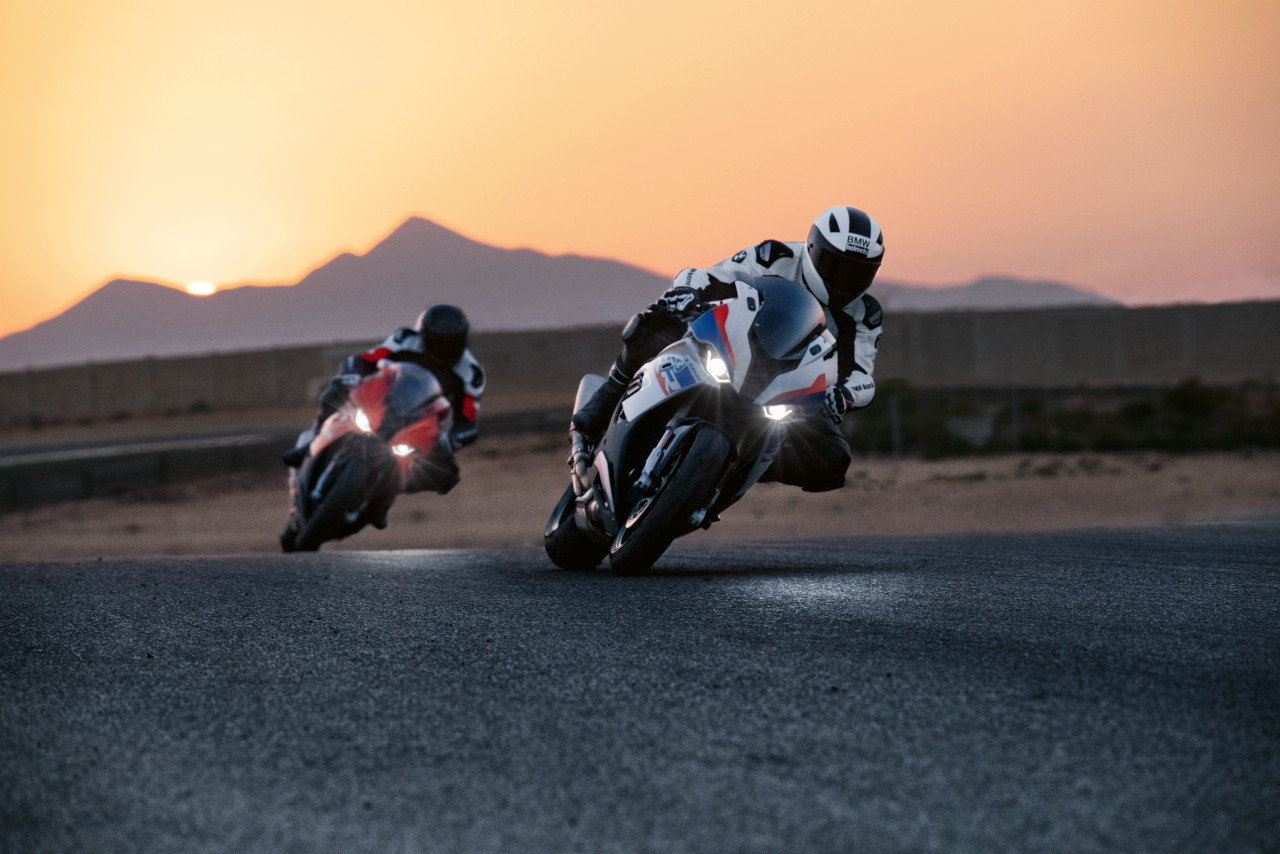 BMW Motorrad S 1000 RR
BMW Motorrad S 1000 RR
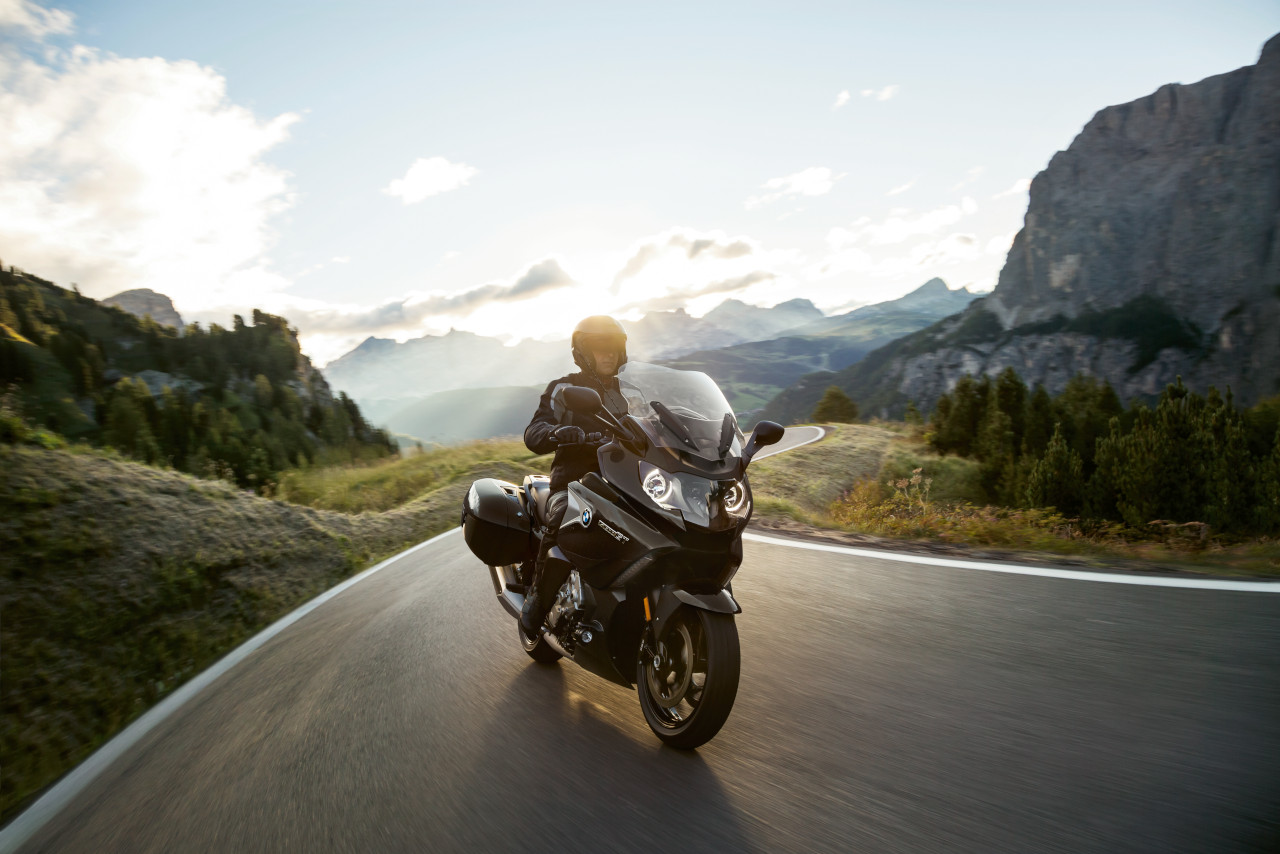 BMW Motorrad K 1600 GT
BMW Motorrad K 1600 GT
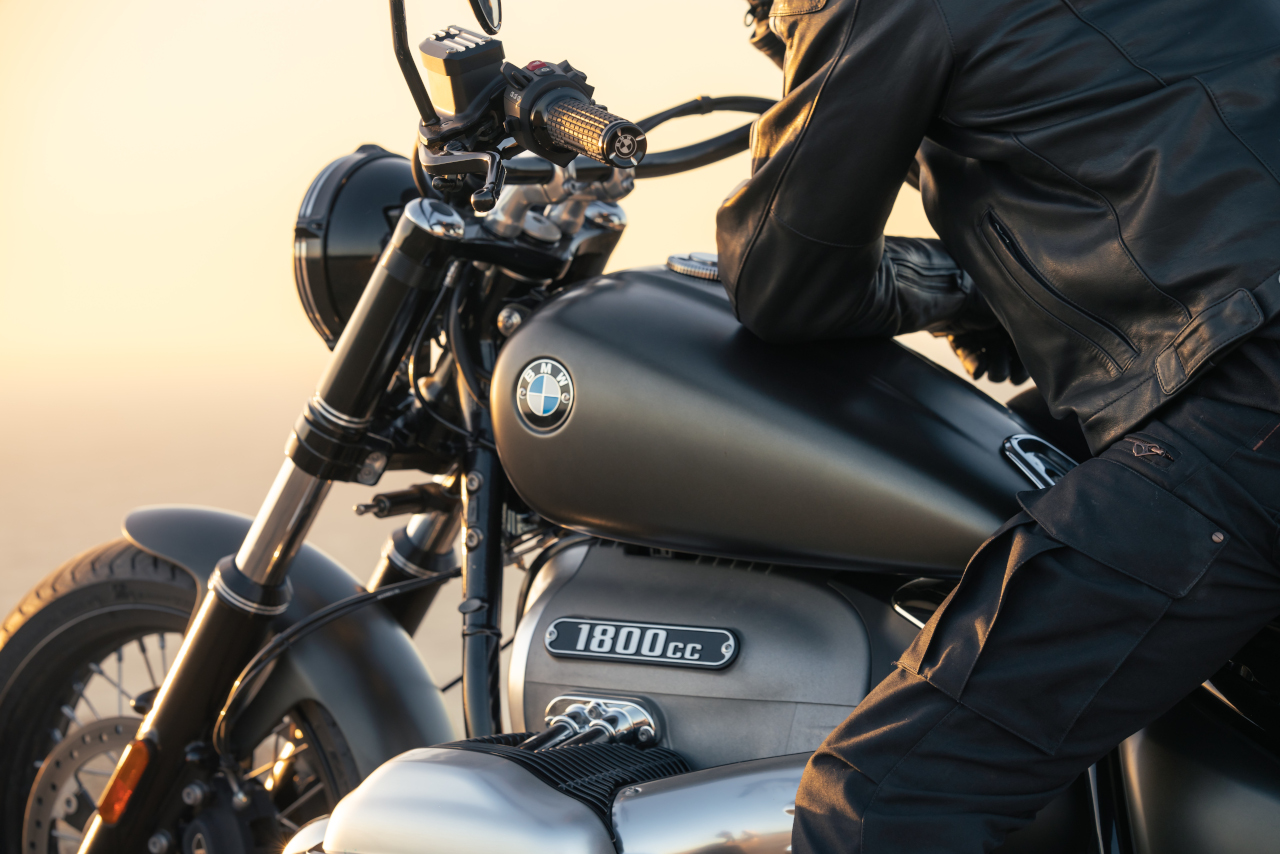 BMW Motorrad R 18
BMW Motorrad R 18
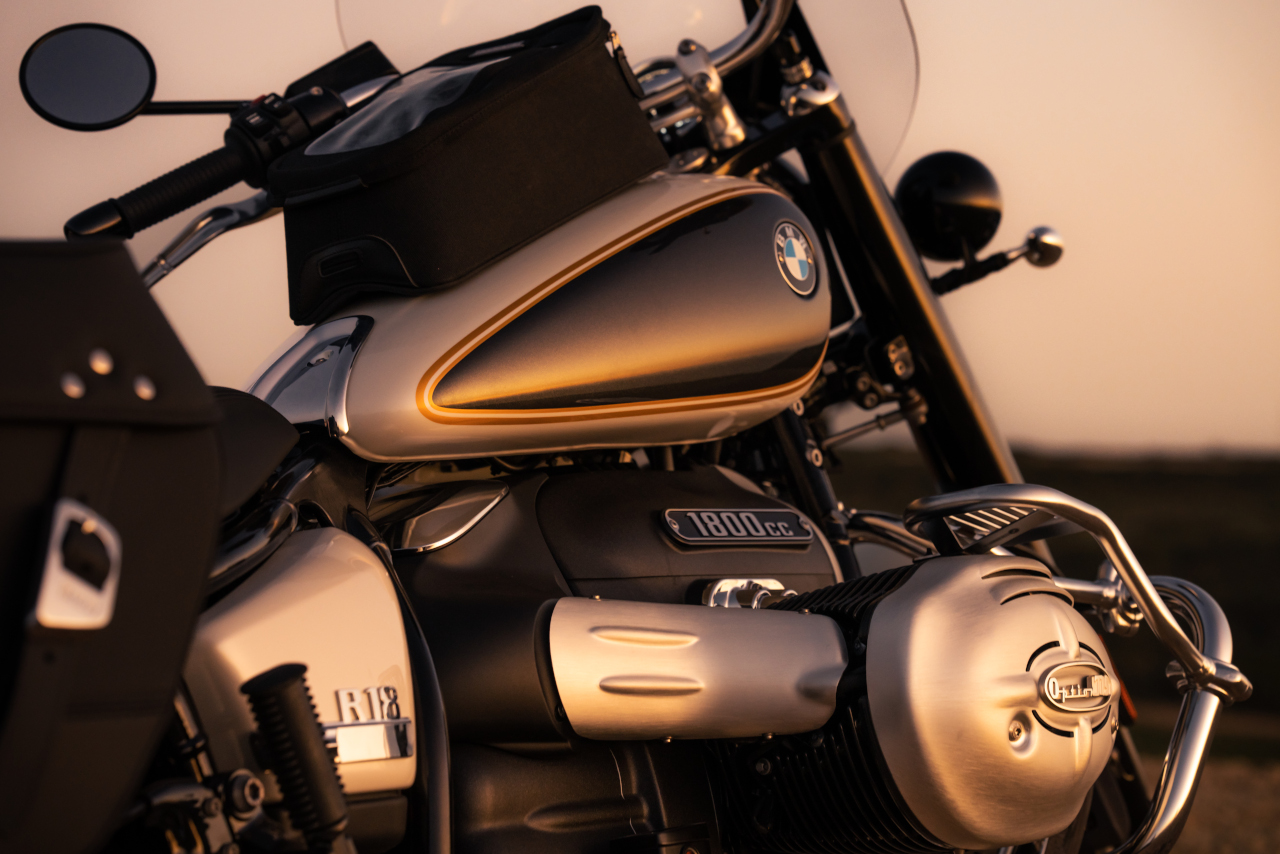 BMW Motorrad R 18
BMW Motorrad R 18
2010: Six cylinders and adaptive cornering light for superior riding.
In 2010, the K 1600 GT and K 1600 GTL opened up new dimensions in handling, long-distance capabilities and comfort with the most compact straight six-cylinder engine in series motorcycle production. The two bikes coupled agility and riding dynamics with a highly luxurious overall package. And with 118 kW (160 hp) and maximum torque of 175 Nm, their six-cylinder power units offered abundant forward thrust.
In developing the K 1600 GT, outstanding wind and weather protection were among the main objectives. Perfecting the innovative design, extreme functionality and aerodynamic qualities entailed complex testing in the wind tunnel. For the first time, the new BMW Motorrad touring bikes featured an optional extra in addition to the standard xenon headlight: the adaptive cornering light, available ex works. This enhanced standard range control of the main headlight by adding the ability to offset lean angles on the road. Another optional extra was the electronic chassis adjustment system ESA II.
2013: BMW R nineT – The essence of 90 fascinating years of BMW Motorrad.
Purist, powerful and naked, the launch of the BMW R nineT marked the 90th anniversary of BMW Motorrad. Marrying the earthiness of the boxer engine and the design language of various bike epochs with innovative technology and a modular concept, the new bike offered a high degree of customisation. And with it, BMW Motorrad quite literally launched a customising boom that would later continue with the BMW R 18.
Pared right back to no more than the essentials, the BMW R nineT – or just “nineT” – had the character of a hand-crafted bike with strong emotional appeal. The concept of the classic roadster fulfilled the wishes of many for authentic biking pleasure. At the top of the agenda were terms such as “purist simplicity”, “emotion” and “genuine, traditional materials” – which is why the nineT combined old-school, style-defining elements of bike-making with state-of-the-art drive and chassis components. The captivating motorcycle was an invitation to enjoy some relaxed cruising, a sporty, dynamic ride on country roads or a spot of customising.
2020: BMW R 18 – Cruising with the big boxer.
In April 2020 the R 18 took BMW Motorrad into the cruiser segment. Its centrepiece is an all-new two-cylinder boxer engine, known as the “big boxer”. With more displacement than any other engine in production motorcycles, the 1,802 cc two-cylinder delivers 67 kW (91 hp). Torque of 150 Nm is available throughout at between 2,000 and 4,000 rpm, and robust traction is accompanied by a full sound.
More than any BMW motorcycle that has gone before, the R 18 follows the tradition of historical BMW bikes in terms of both technologies and design. It takes its cues for both from famous models such as the BMW R 5 and puts the focus back on the essentials: purist, no-frills technology with the boxer engine as the epicentre of riding pleasure. The overall concept melds classic design and clear yet contemporary technology to create the R 18 and deliver a captivating ride that is both cultivated and emotional in equal measure.
2021: BMW CE 04 – Electric and mobile in urban areas.
In the summer of 2021 BMW Motorrad took the next logical step in its electromobility strategy for urban areas – with the BMW CE 04. As the final series version of the 2017 BMW Motorrad Concept Link and the near-series Definition CE 04 of 2020, the BMW CE 04 marked a new chapter in urban bike mobility. With its electric drive, progressive design and innovative connectivity solutions, the new scooter offers transport and communication all rolled into one, for new urban mobility.
With 31 kW (42 hp), the BMW CE 04 provides abundant power and fun, completing the “traffic light test” from 0 to 50 km/h in just 2.6 seconds. Even in the reduced-output L3e-A1 class, the bike offers plenty of power, delivering 23 kW (31 hp). And with a top speed of 120 km/h, both enable rapid progress, not just in cities but on stretches of motorway too.
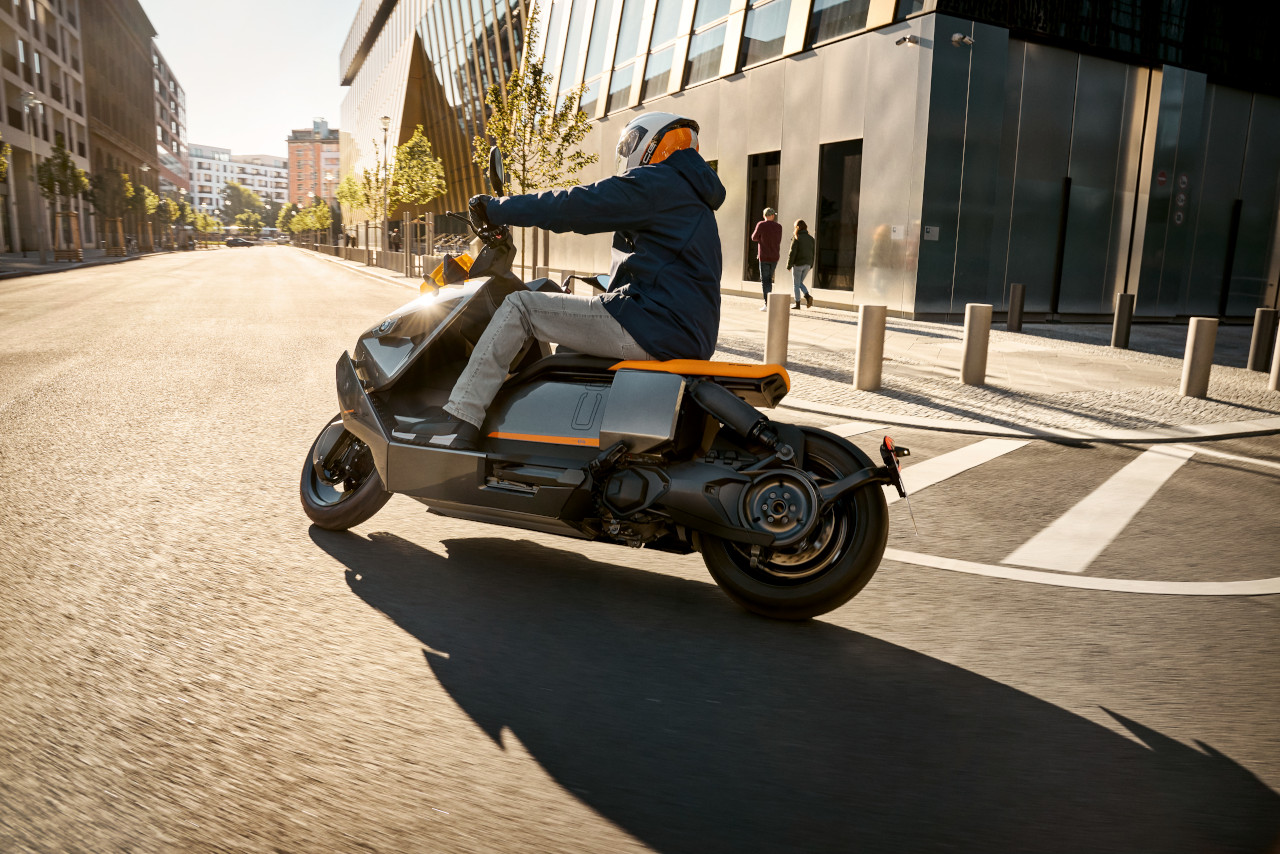 BMW Motorrad CE 04
BMW Motorrad CE 04
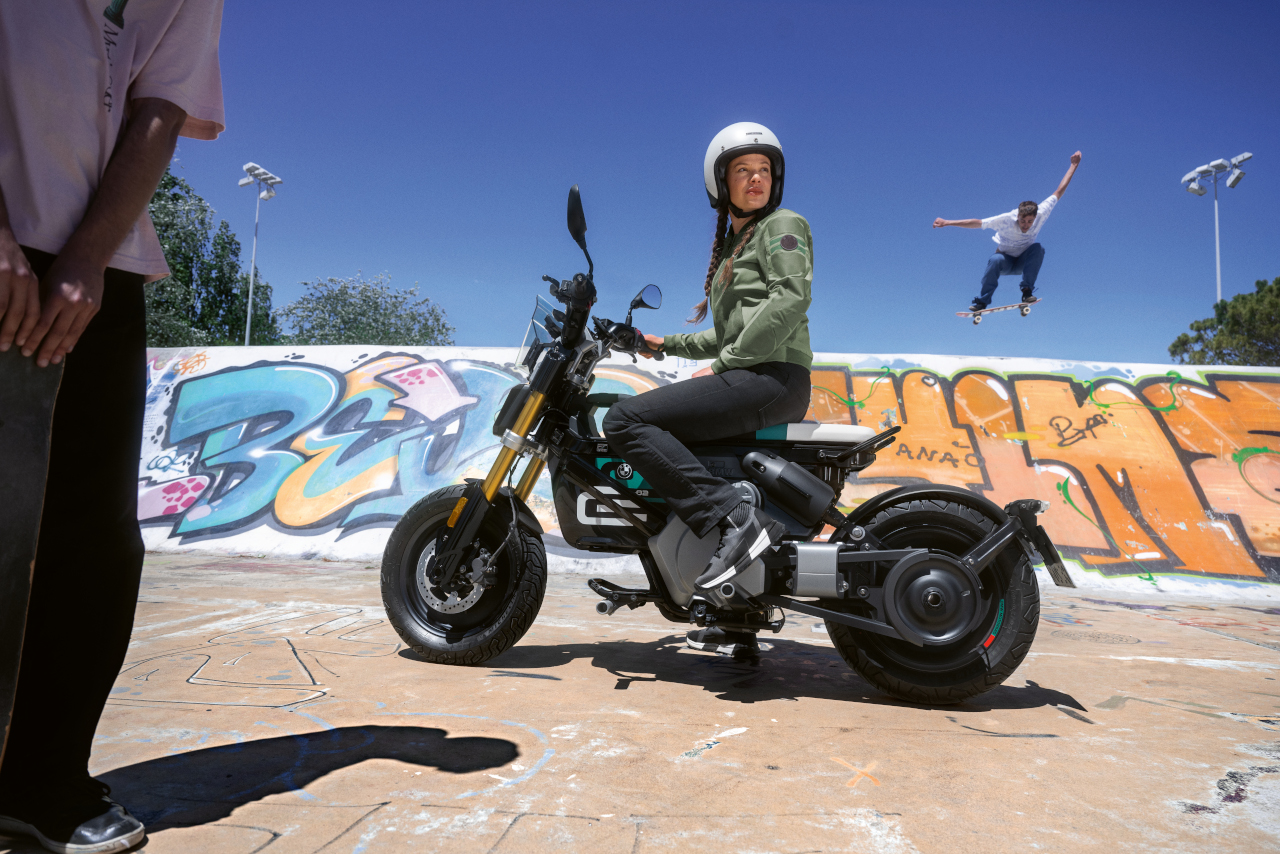 BMW Motorrad CE 02
BMW Motorrad CE 02
2023: BMW M 1000 XR – Long-range sports bike becomes the third M model.
The letter M is synonymous worldwide with racing success and the fascination of high-performance BMW motorbikes, appealing to customers who value performance, exclusivity and individuality especially. By the end of 2018, BMW Motorrad had introduced the successful M Automobile strategy to the world of bikes, launching special M equipment packages and M Performance Parts. The BMW M 1000 RR and M 1000 R finally became BMW Motorrad’s first dedicated M models.
In June of this centenary year, BMW Motorrad presented a prototype M 1000 XR. Picking up on the brand’s almost 100-year sporting tradition, this offered a preview of a super-sporty bike that easily delivers a level of performance on country roads, long distances and race tracks that remains unprecedented in this segment.
2023: BMW CE 02 – The cool eParkourer for cities and urban areas.
The BMW CE 02 invites a new audience to join the BMW Motorrad brand. Powered by an electric drive, it is aimed at young riders and is neither motorcycle nor scooter but an electric freerunner. Made for the city and urban environments, it is nimble, nifty and robust, and visually pared-back to the essentials. Its large wheels offer the right stability as well as riding fun on different terrains.
With peak performance of 11 kW (15 hp), the new CE 02 can be ridden by anyone aged 16 or over. A 4 kW (5 hp) nominal performance: 3.2 kW (4 hp) version of the bike with a limited top speed of 45 km/h also meets the requirements of the AM-class driving license, meaning that in Germany, for example, it can be ridden at age 15 and upwards and by those with a car driving licence.
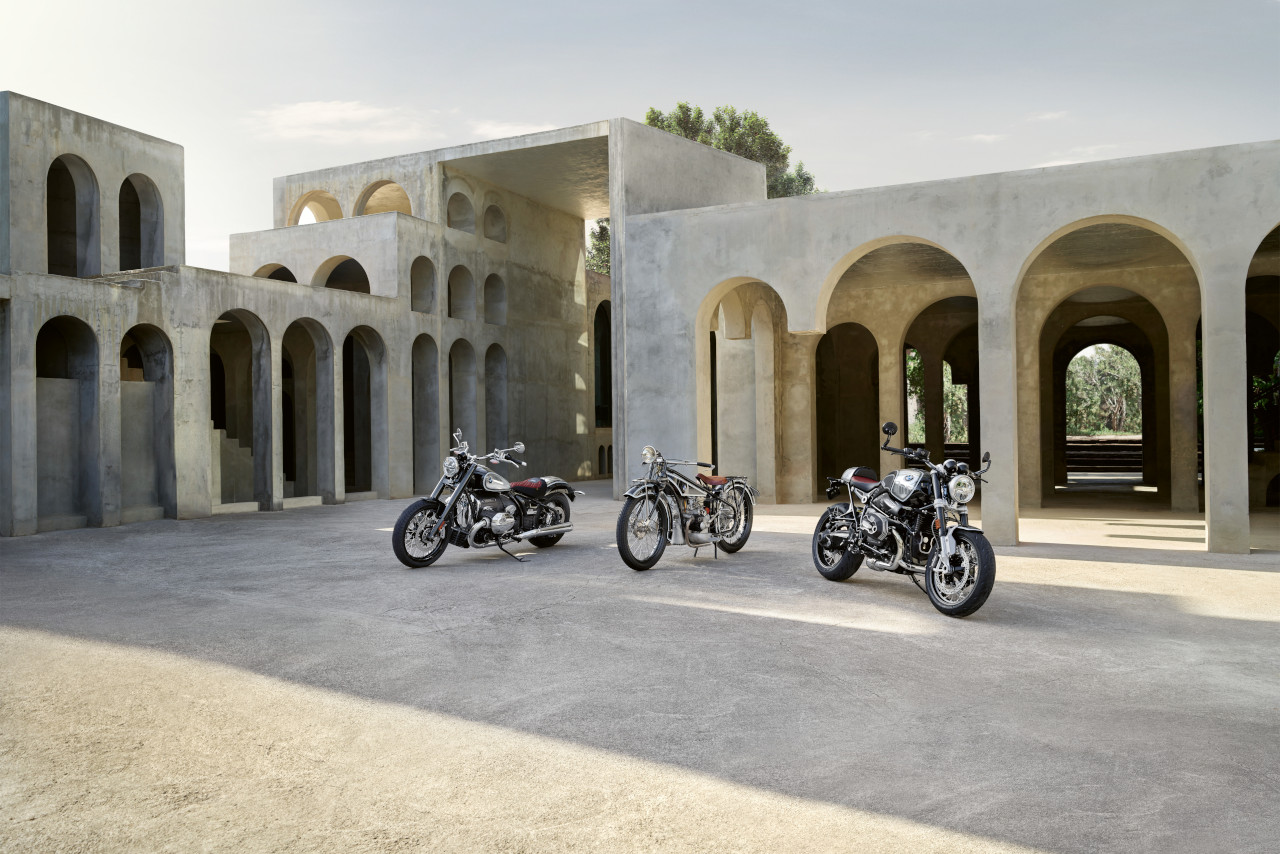 Left BMW Motorrad R 18; center BMW Motorrad R 32; right BMW Motorrad R nineT
Left BMW Motorrad R 18; center BMW Motorrad R 32; right BMW Motorrad R nineT
2023: 100 years of BMW Motorrad – The big show at the BMW Museum takes you on an exciting journey through the history of the brand.
To coincide with 100 Years of BMW Motorrad, the great jubilee exhibition at the BMW Museum in Munich opened to the public on 12 May 2023. For the next year or so, visitors will be able to explore the 100-year history of BMW Motorrad as the world famous BMW Museum bowl honours BMW motorcycles by showcasing more than 55 originals from ten decades.
Built in 1973, the architecture of the round building fascinates visitors to this day and presents a series of subjects across about 15 stations. The five larger exhibition levels are dedicated to the most famous BMW Motorrad designers, the different interests of customers, fascinating pairings of old and new, and special model line ups. There is also a separate platform showcasing special gems from the historic motorcycle collection of BMW Group Classic for the very first time.

